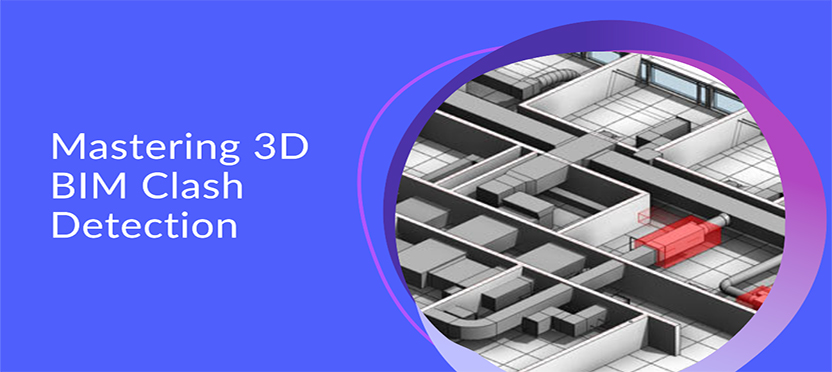Engineering and architectural firms in the AECO industry today are facing cut throat competition. To ensure their survival and growth, along with specializing in Drafting Services, many have adopted new technology and concepts, particularly BIM, that help them accelerate their operations by enabling increased speed, collaboration, coordination and productivity.
Along with adopting BIM, companies need to make sure that their digital BIM models and the drawings extracted from them are coordinated and error free to enable a smooth as well as cost effective construction process. This is where clash detection comes in.
Clash Detection is one of the most vital stage of BIM process. It identifies the location of the conflict i.e. areas where Structural, Architectural and MEPF systems and elements occupy the same space and plays a vital role in its resolution. By identifying and resolving such inconsistencies in the designing stage itself, contractors can save significant time, cost and efforts on site by eliminating the need for costly reworks.
The “How to?” part of Clash Detection
BIM modelers initiate the Clash detection process by collecting and combining each of the separate models made by architects and engineers, thus making a federated BIM model using BIM integrated tools and softwares.
Clash detection software are becoming increasingly advanced, allowing users to detect clashes within various building components like overlaps between structural beams and architectural elements, etc. BIM modelers check and eliminate inconsistencies in the final model using these software that indicate clashes using vibrant colors.
After resolving all clashes, a clash-free 3D BIM model of the building is created. This final digital model is known as coordinated model which is used to extract sheets and create working drawings. Construction Documentation Services
The types of BIM Clash Detection
The scope of clash detection can broadly be classified into three types, each of which is equally useful for contractors for project completion on time along with reduction of overall cost and material wastage.
- Hard Clash Detection
This type of clash refers to the situation when two components happen to share the same physical space. For example, an air vent clashing with the space already occupied by a drainage pipeline or electrical wires sharing the same physical space as that of a fire safety piping.
It is crucial to detect and resolve this type of clash in the early pre-construction stage as on-site rework can become extremely costly and cause unnecessary delays, affecting its feasibility.
- Soft Clash Detection
A soft clash occurs when an element is not provided with the required geometric or spatial tolerance or when its buffer zone is breached. MEPF systems need spatial tolerance for safety and future maintenance requirements. For example, an air conditioning unit will require adequate space for safe and easy access for repair and upkeep work.
When soft clashes are ignored, they can lead to maintenance issues or even hazards like short circuits. Offering necessary system and component related tolerance data in BIM software can go a long way to detect soft clashes as per prevalent standards and regulations.
- Workflow Clash Detection
Work flow clashes also known as 4D clashes are related to overlaps or conflicts between schedules like general workflow timeline clashes, equipment delivery clashes, material delivery clashes, etc. Such clashes, when left unresolved, result in reduction of overall operation efficiency on site, leading in delays and rise in labor costs due to process freeze.
BIM clash detection software aids contractors to schedule activities and deliveries such that they don’t overlap, hence designing a seamless workflow that maximize on-site operational efficiency.
Conclusion
Clash Detection Services plays a pivotal part in BIM process. It allows users to create sophisticated digital models as early as the design phase. Every single clash detected and eliminated in the pre-construction stage itself results in one less potential roadblock that could have resulted in project changes, multi-level design changes and budget expansion. This helps stakeholder to achieve confidence in the project about its timely and precise completion.
To stay competitive in the fast paced AEC industry, companies should adopt a wholesome BIM procedure by including clash detection stage in it as a must.

